


Artificial intelligence is everywhere — from Spotify playlists to your Gmail autocomplete. But if you’re building a startup, the real question isn’t what AI is, but what it can do for your product. No textbook theory, no sci-fi hype — a practical look at how to turn artificial intelligence into a working feature in your app or platform.
P.S. If you’re hoping to “create your own AI” because it sounds fancy — we’ll talk you out of it. And then, maybe, back into it — but with a proper plan.
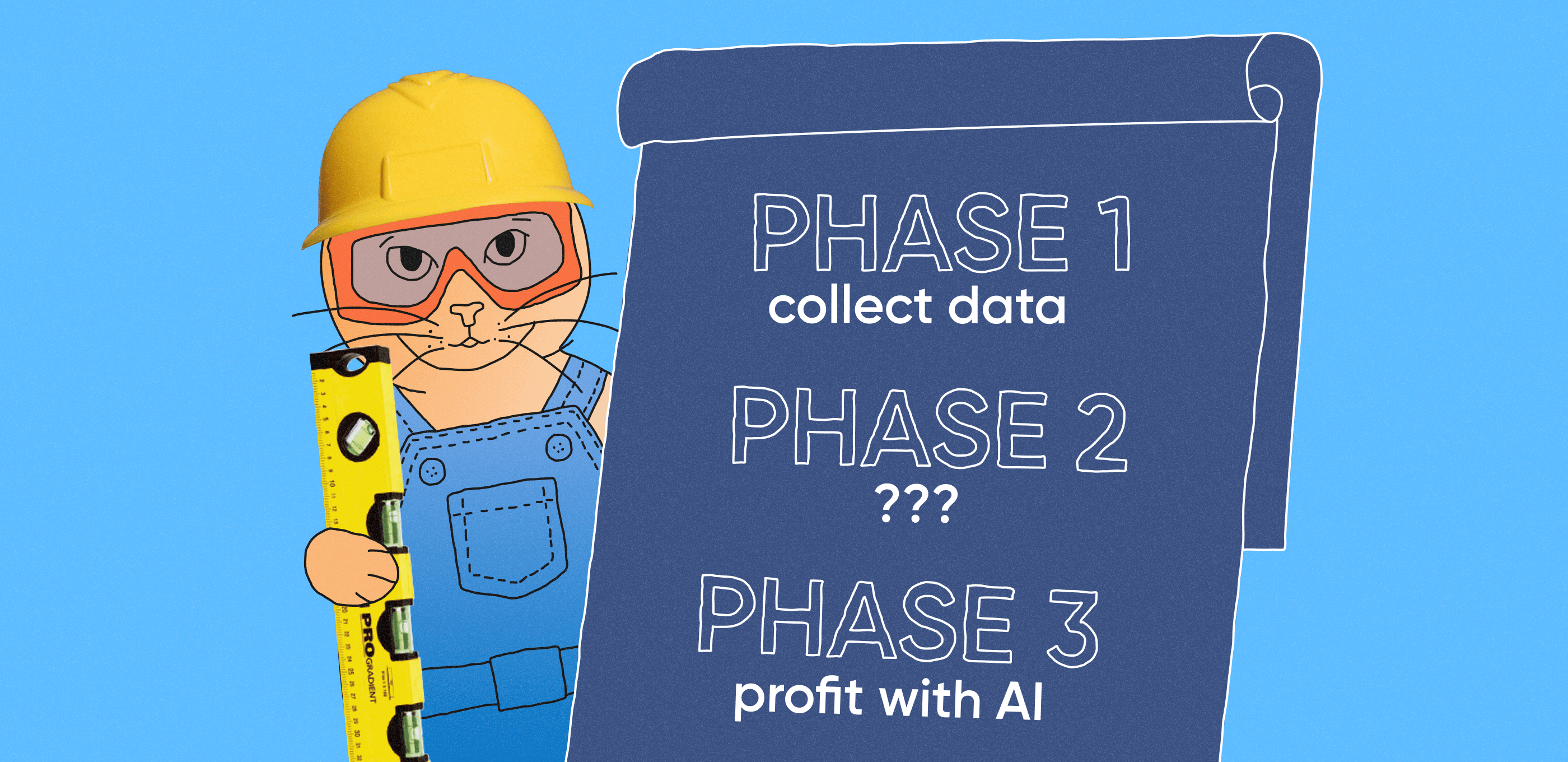
If your vision of AI refers to a talking robot that knows all your secrets — that’s fine, we grew up on the same movies. But in product development, AI usually means something more specific.
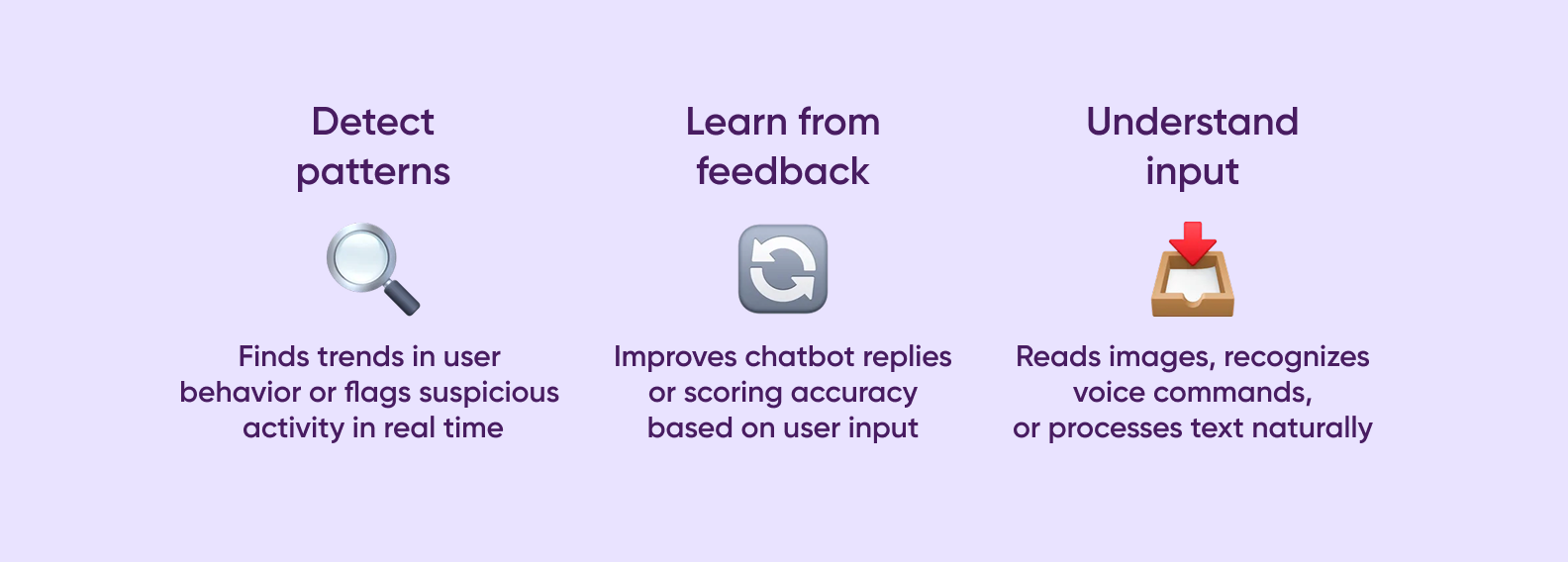
They’re features people already use often without realizing there’s an AI model behind the scenes: from Netflix recommendations to Gmail’s autocomplete. The global market for AI technologies is expected to reach $244 billion in 2025 — and over $800 billion by 2030. This kind of growth shows that AI is already a part of how most digital products work — sometimes in obvious ways, sometimes in the background.
We’re talking about AI models, machine learning, natural language processing, and deep learning — all of which aim to replicate specific tasks once reserved for human intelligence.
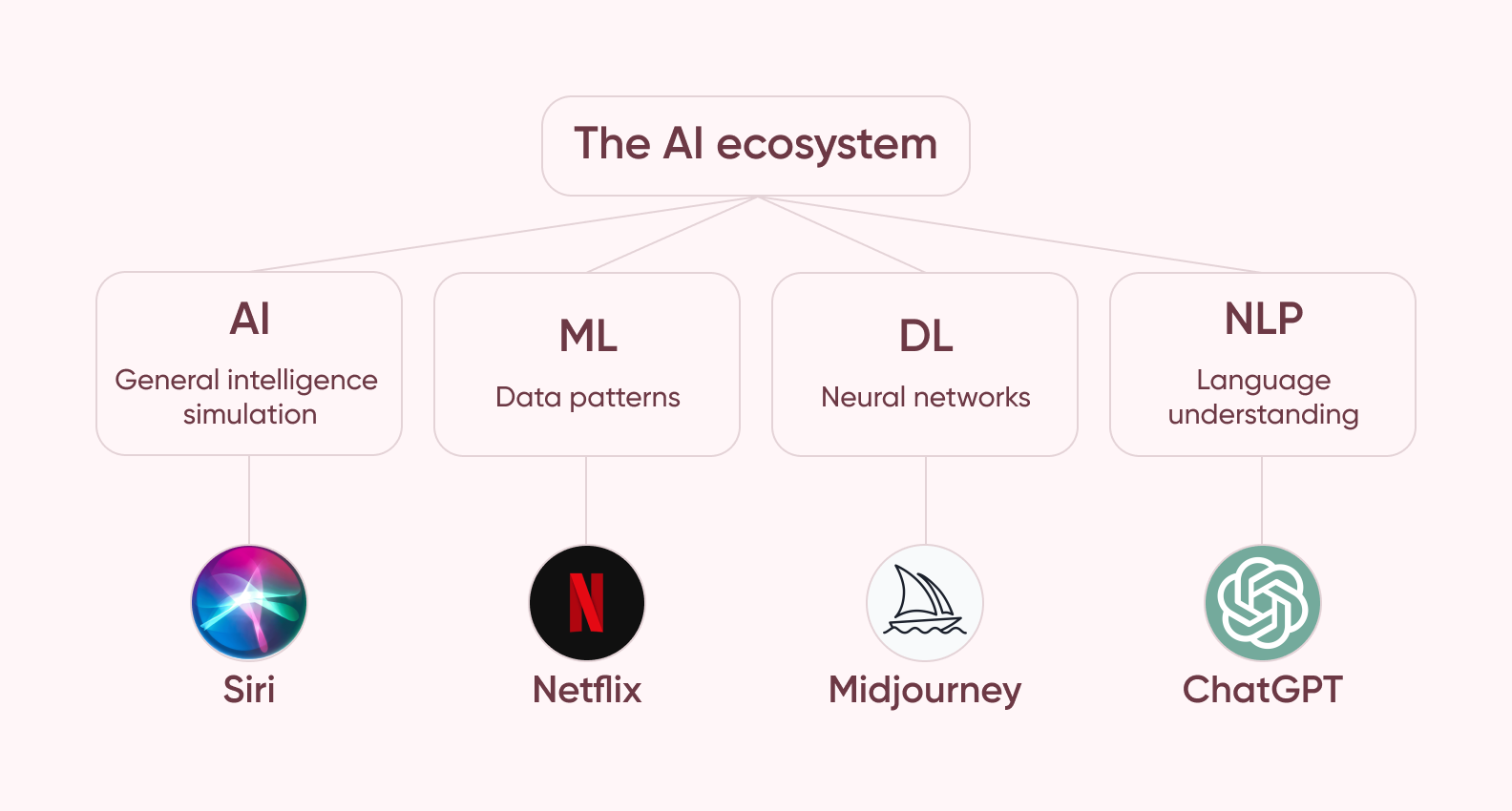
Let’s walk through what matters, where it’s used, and when it’s actually overkill. Artificial Intelligence (AI) is a general term for systems that handle tasks requiring human-like thinking. Machine Learning (ML) is an approach where algorithms learn from data without being explicitly programmed for every scenario. Deep Learning (DL) uses neural networks to tackle especially complex problems. And Natural Language Processing (NLP) helps machines understand human speech and text.
We’ve seen it dozens of times: a founder comes in asking for an AI feature — and walks out with a simpler solution. Because not every problem solving requires artificial intelligence. Some need a good dashboard, or a rule-based filter. And that’s okay.
That’s not to say AI doesn’t have real value — it does. But only when it actually solves a problem that other tools can’t.
Say you’re trying to auto-tag thousands of images uploaded by users every day. You could hire moderators, sure — but scaling that with people gets expensive fast. That’s where AI thrives: doing boring, repetitive tasks at scale.
Or imagine you’re trying to catch hate comments and discussions on a forum. If your current filter breaks every time someone changes a letter, that’s a clue: hard-coded logic isn’t enough. You need something that can learn patterns — even subtle ones.
Maybe you want your app to get smarter with every user. Like recommending new workouts based on recent sessions, or adjusting a course when someone’s stuck. That’s personalization — and AI is what powers it.
In other words: AI makes sense when the task is too complex to write rules for, or when those rules change all the time.
But even then — three things must be true, if you’re planning to integrate AI.
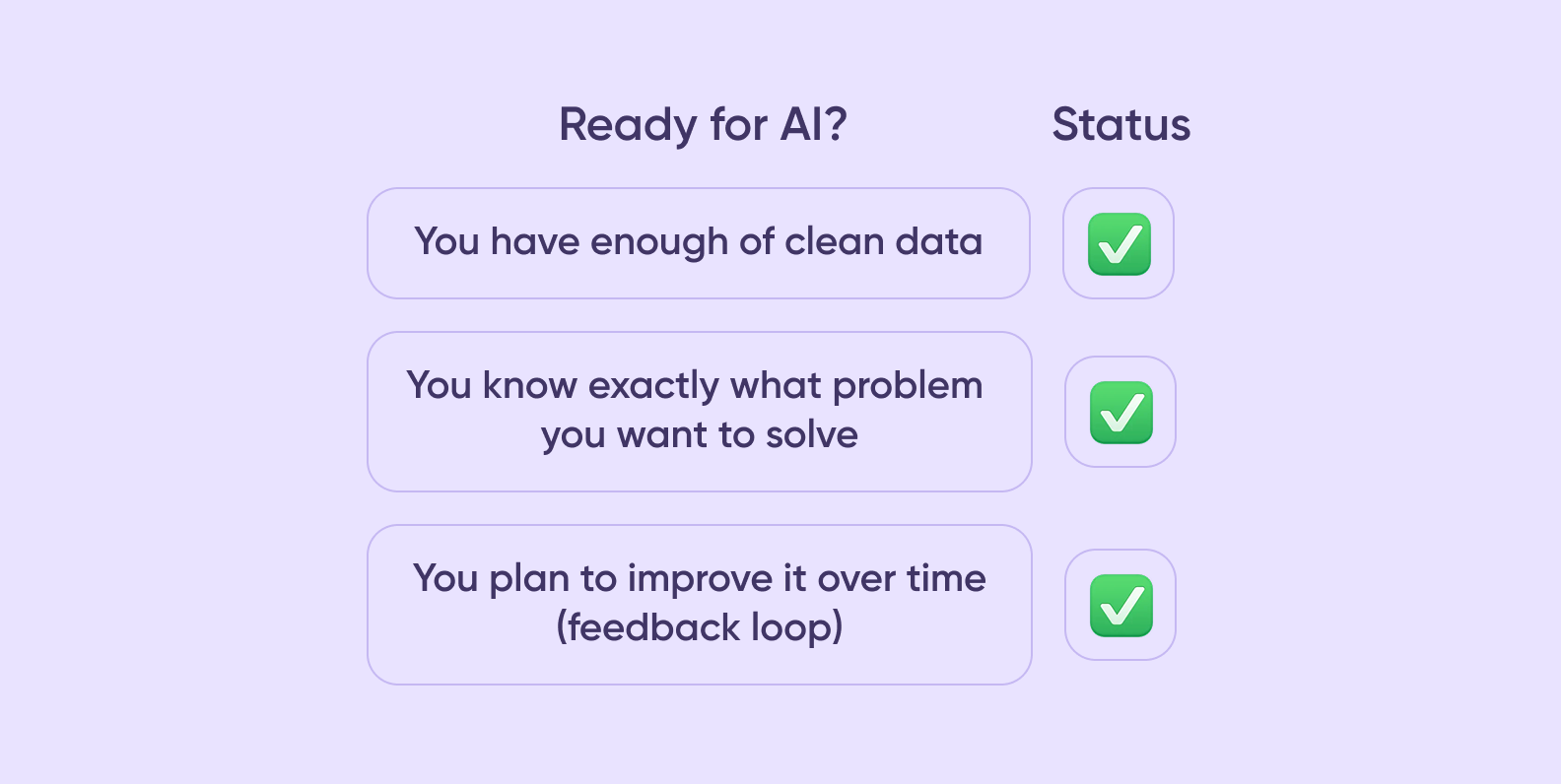
If you’re not there yet — that’s okay. Sometimes the best first step is not building an AI. It’s figuring out what problem you’re really solving. Keep reading — we’ll show what it actually takes to build an AI feature, step by step.
You’ve figured out what you want to solve and where AI fits in. Here’s how an idea turns into a working AI model that actually delivers.
Everything starts with gathering the right dataset and making sure it's clean enough to teach something useful. You might export your app's usage logs, scrape public data (if legal), or tap into datasets like ImageNet for images or Wikipedia for text tasks. For specialized domains, you'll often need to create and label data yourself.
Once collected, the data needs serious cleaning. Remove duplicates, fix broken entries, and standardize formats. Skip this step and your model learns from garbage.
Finally, split everything into training and testing sets. Train on one, test on the other. Otherwise, you're just teaching your AI to memorize, not learn.
Different tasks need different approaches.

Training means feeding your data through the model repeatedly while it adjusts to reduce errors. You'll tweak settings like learning rate and batch size. Think of them as knobs that control how fast and thoroughly the model learns.
Google Colab offers free GPUs for prototyping. When you're ready to scale, you'll need paid services like AWS or Azure.
Now that the first iteration of the training process is done, time to see if your model actually works. Run it on the test data — examples it hasn't seen before. Check the numbers: accuracy tells you how often it's right, while other metrics show if it's missing important cases or making too many false alarms.
First attempts rarely nail it. That's normal. You'll adjust settings, add more data, or clean it better. Also crucial: check for bias. If your model works great for one group but poorly for another, fix it before going live.
A model trapped on a server isn't helping anyone. Decide how it'll run in production: as a cloud API or directly on users' devices? Mobile apps need lightweight versions through TensorFlow Lite or Core ML.
Set up infrastructure that scales with traffic. Add monitoring to catch performance drops or accuracy issues immediately. Test everything thoroughly in staging first.
UX matters here. Users need to understand what the AI is doing. Show confidence scores, add explanations, and always have a backup plan for when the model isn't sure.
Launch is just the beginning. Monitor how the model performs with real users. When accuracy drops or user behavior shifts, it's time to retrain. Collect user feedback, handle edge cases, and expand capabilities based on what users actually need.
MLOps tools like MLflow or Kubeflow automate this cycle — versioning models, retraining on schedule, and rolling back if something breaks. A good pipeline saves countless hours and prevents most disasters before they happen.
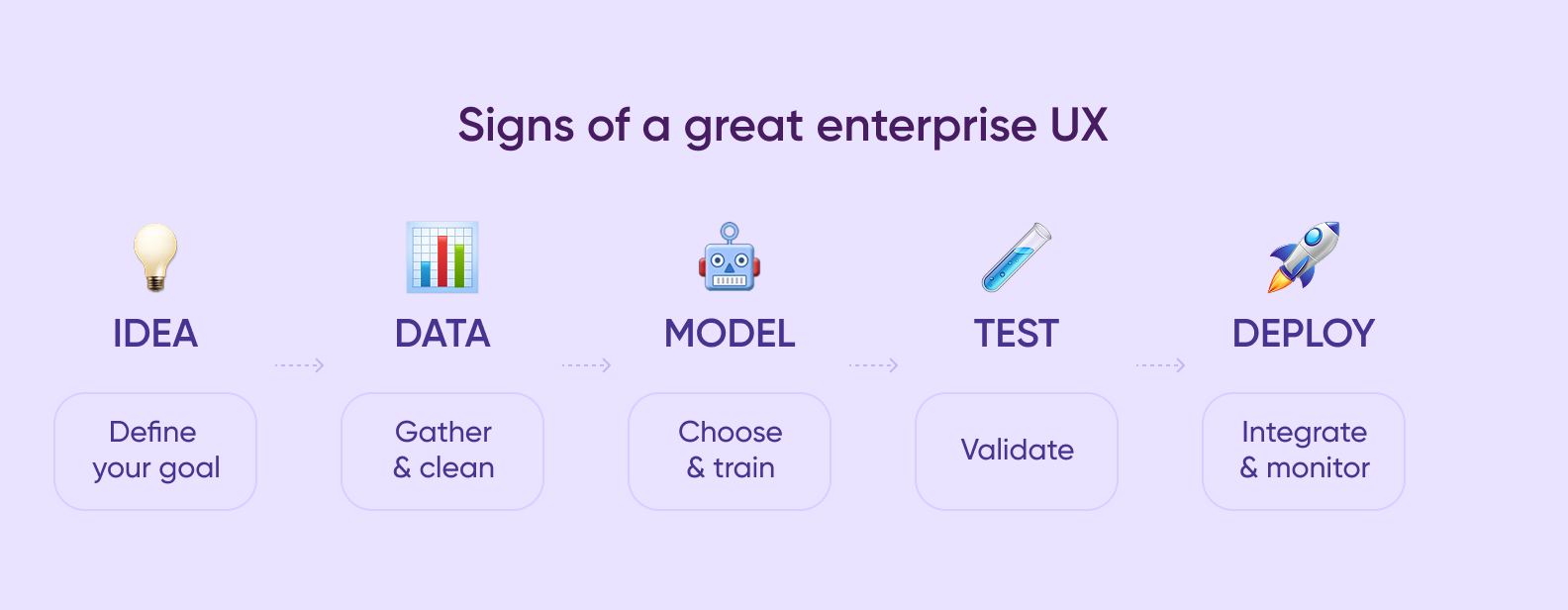
Even the best AI idea won’t fly without the right tools. Here’s a look at how to create an AI project today.
Programming languages. Python is the backbone of the AI development process. It supports key libraries, is easy to read, and works across the stack — from quick data cleaning to deep learning. R, JavaScript, and C++ show up too, but Python leads in 80% of real-world cases.
Frameworks and libraries. TensorFlow and PyTorch are the top two for deep learning — both offer GPU support and prebuilt components. For simpler tasks, scikit-learn remains a go-to, especially for prototyping. Keras (part of TensorFlow) is great for building models fast.
Data tools and environments. Before training comes cleanup. NumPy and pandas help organize and prepare your high-quality data, while Matplotlib and Seaborn help you make sense of the results. Jupyter Notebooks tie it all together with interactive code cells and easy visualization.
Compute and infrastructure. You can train locally with a GPU or use cloud platforms like Google Cloud, AWS SageMaker, or Azure ML. For beginners, Google Colab offers a free, browser-based entry point — perfect for early tests.
Tracking and scaling. To manage multiple experiments, tools like MLflow or Weights & Biases track versions and performance. These tools are crucial when your team scales or models get complex.
Most tools are open-source or cloud-ready. The real challenge isn’t access — it’s knowing how to combine them right.
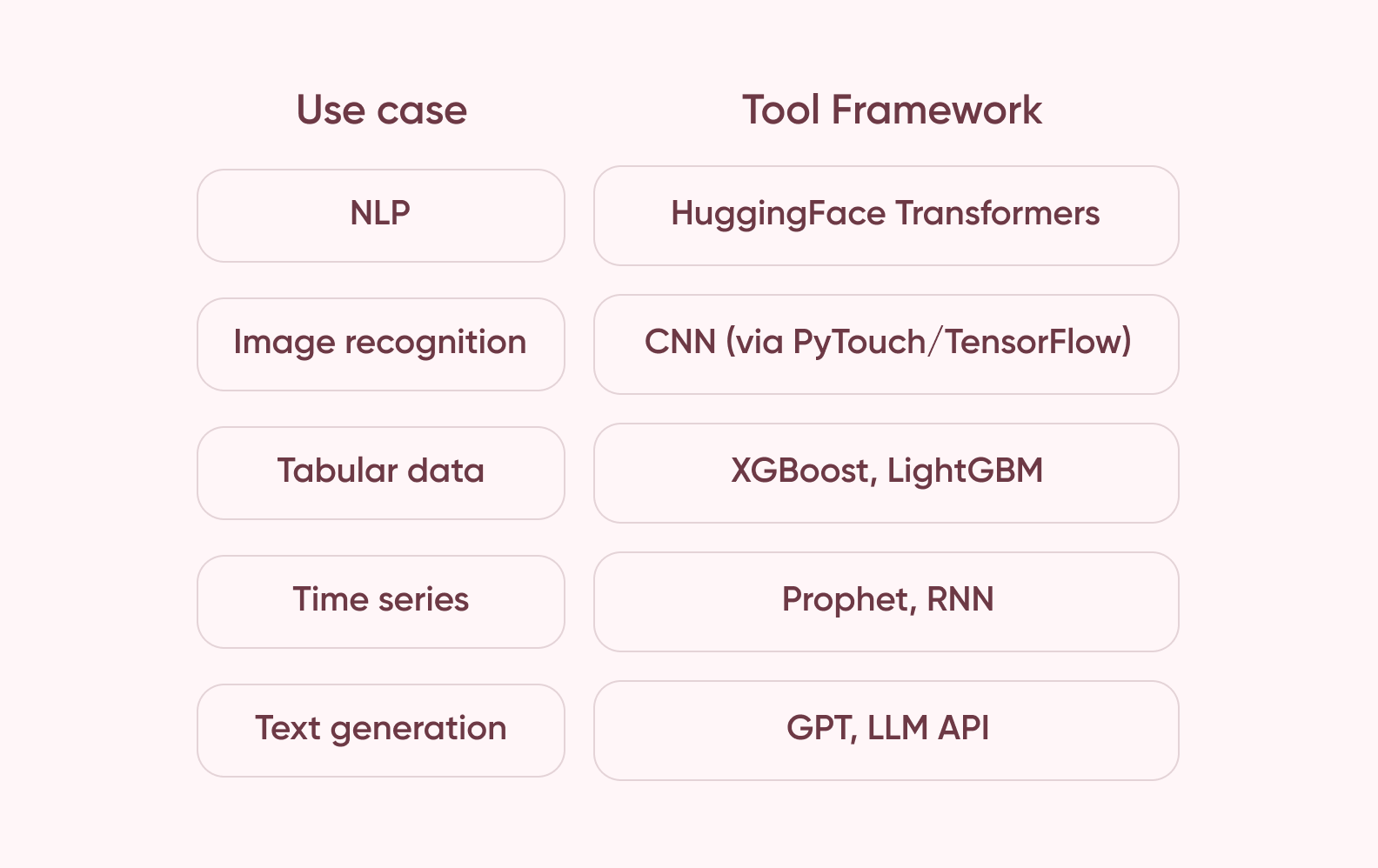
Designing AI algorithms isn't about using the most advanced technology — it's about matching the right solution to your actual business problem. Sometimes the smartest decision is knowing when NOT to use AI.
Start with the business need, not the technology. What specific problem are you solving? Can it be measured? Will AI actually improve the user experience, or are you adding it because it sounds impressive?
We learned this lesson during a dating app analysis. The client wanted AI-powered matching to compete with market leaders. After thorough research and business analysis, we discovered that users in their target market didn't actually want AI recommendations — they preferred browsing profiles themselves. The AI feature would have added complexity and cost without solving a real user problem.
If AI genuinely fits your needs, match the algorithm to your specific task:
Start simple. A basic algorithm that works beats a complex one that doesn't.
Every AI implementation comes with costs beyond development:
In our dating app case, implementing AI matching would have required continuous data collection, model updates, and significant server resources. The ROI simply wasn't there — traditional filtering and search worked better for the target audience.
Don't reinvent the wheel. Most successful AI implementations build on existing research and open-source models. Adapt proven algorithms to your specific data rather than creating from scratch.
The key is knowing when to apply them. Just because you can add AI doesn't mean you should. Focus on genuine value creation, not technical showmanship.
There’s no one-size-fits-all answer — but we can outline what affects the price.
The cost of developing AI depends on four key things: team (machine learning engineers, data scientists), infrastructure (cloud compute, GPUs), data (collection, labeling), and development time. The more complex the task, the longer it takes to experiment and improve.
A basic AI prototype built by a small team or agency might start at $30–60k. Larger, production-ready systems with complex models, feedback loops, and maintenance easily climb into six figures.
But that’s just the build phase. Once your product is live, expect ongoing costs: cloud storage, traffic, GPU compute for inference. Fortunately, cloud services are scalable — you only pay for what you use.
How to save? Start with an MVP: test your idea with a lightweight model. Use pre-built APIs (like OpenAI or Google Vision) where possible. And if you don’t have in-house experts, outsource to a focused team — it’s often more cost-efficient than hiring full-time.
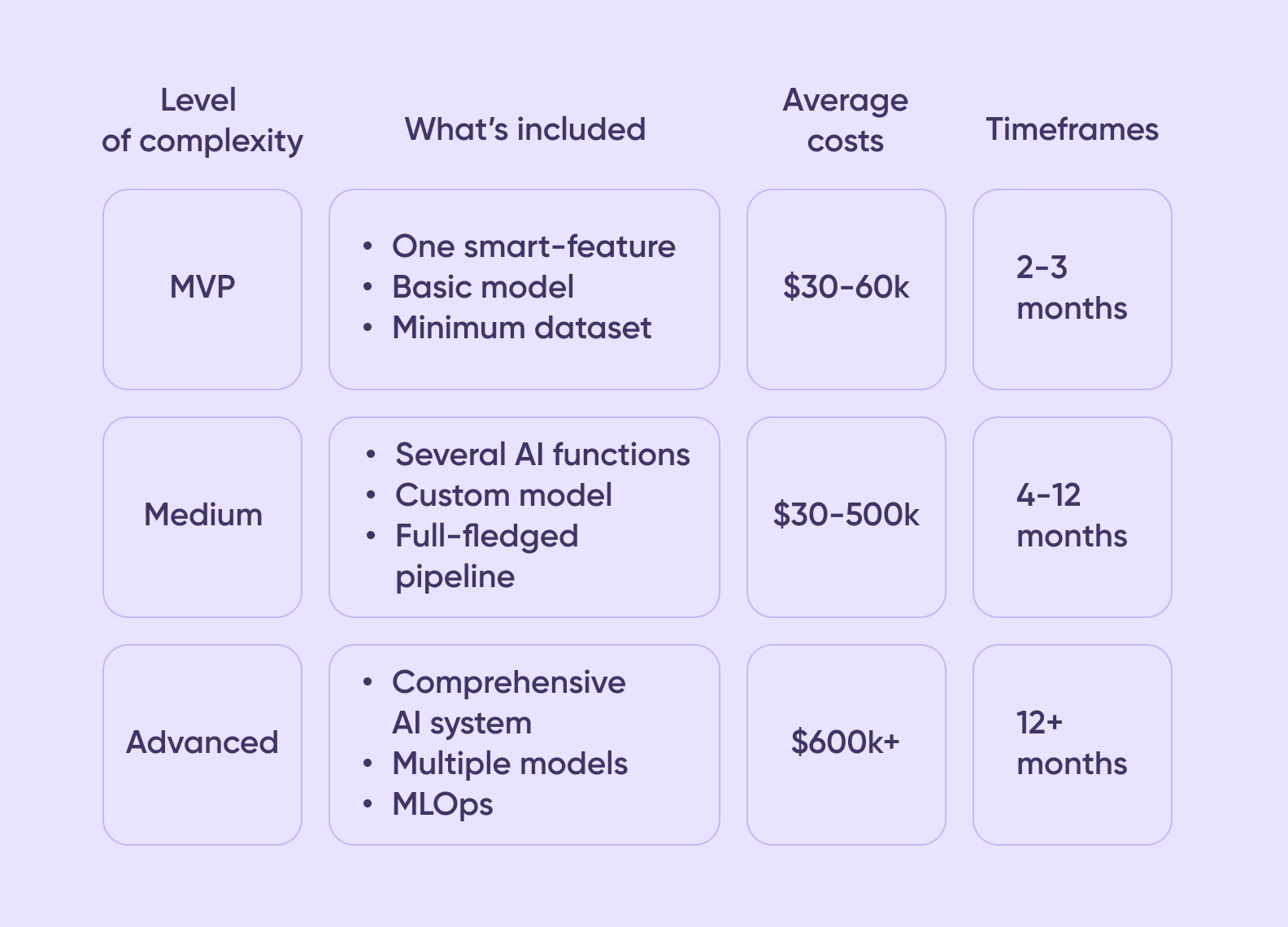
Creating an AI might seem overwhelming at first — but with a clear goal, the right tools, and a focused team, it’s absolutely within reach for startups. From defining your problem to choosing the tech stack, training a model, and integrating it into your product, you now have a roadmap to follow.
AI is a way to build smarter features, automate repetitive tasks, and deliver more value to users — often by mimicking aspects of human intelligence like learning and adaptation. And the earlier you start exploring, the stronger your competitive edge can become.
➡️If you want to integrate AI models into your business processes — <a class="blog-modal_opener">drop us a message</a>. We’ll tell you what’s possible, what’s pointless, and what might be easier than you think.